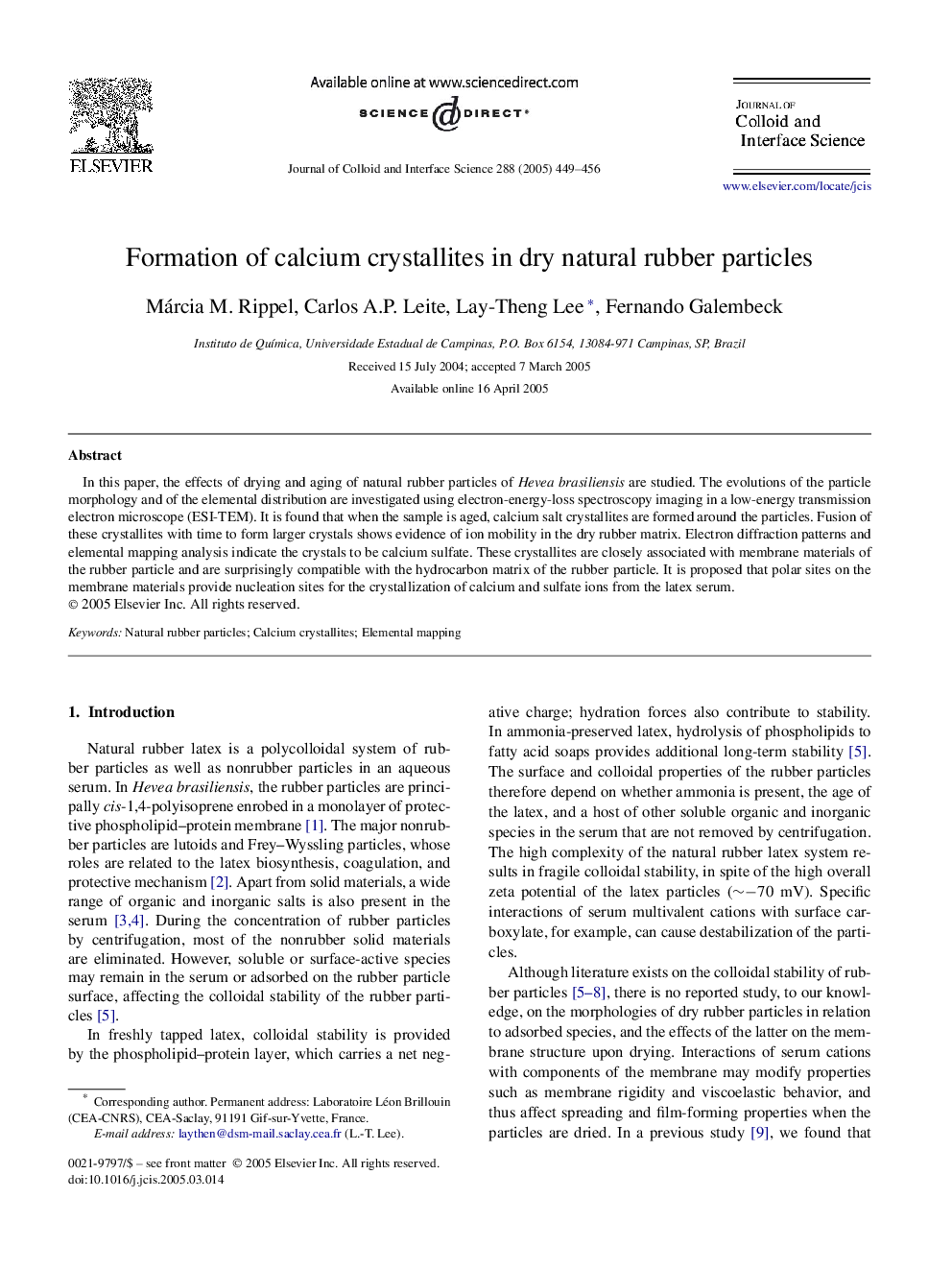| Article ID | Journal | Published Year | Pages | File Type |
|---|---|---|---|---|
| 10377641 | Journal of Colloid and Interface Science | 2005 | 8 Pages |
Abstract
In this paper, the effects of drying and aging of natural rubber particles of Hevea brasiliensis are studied. The evolutions of the particle morphology and of the elemental distribution are investigated using electron-energy-loss spectroscopy imaging in a low-energy transmission electron microscope (ESI-TEM). It is found that when the sample is aged, calcium salt crystallites are formed around the particles. Fusion of these crystallites with time to form larger crystals shows evidence of ion mobility in the dry rubber matrix. Electron diffraction patterns and elemental mapping analysis indicate the crystals to be calcium sulfate. These crystallites are closely associated with membrane materials of the rubber particle and are surprisingly compatible with the hydrocarbon matrix of the rubber particle. It is proposed that polar sites on the membrane materials provide nucleation sites for the crystallization of calcium and sulfate ions from the latex serum.
Keywords
Related Topics
Physical Sciences and Engineering
Chemical Engineering
Colloid and Surface Chemistry
Authors
Márcia M. Rippel, Carlos A.P. Leite, Lay-Theng Lee, Fernando Galembeck,
